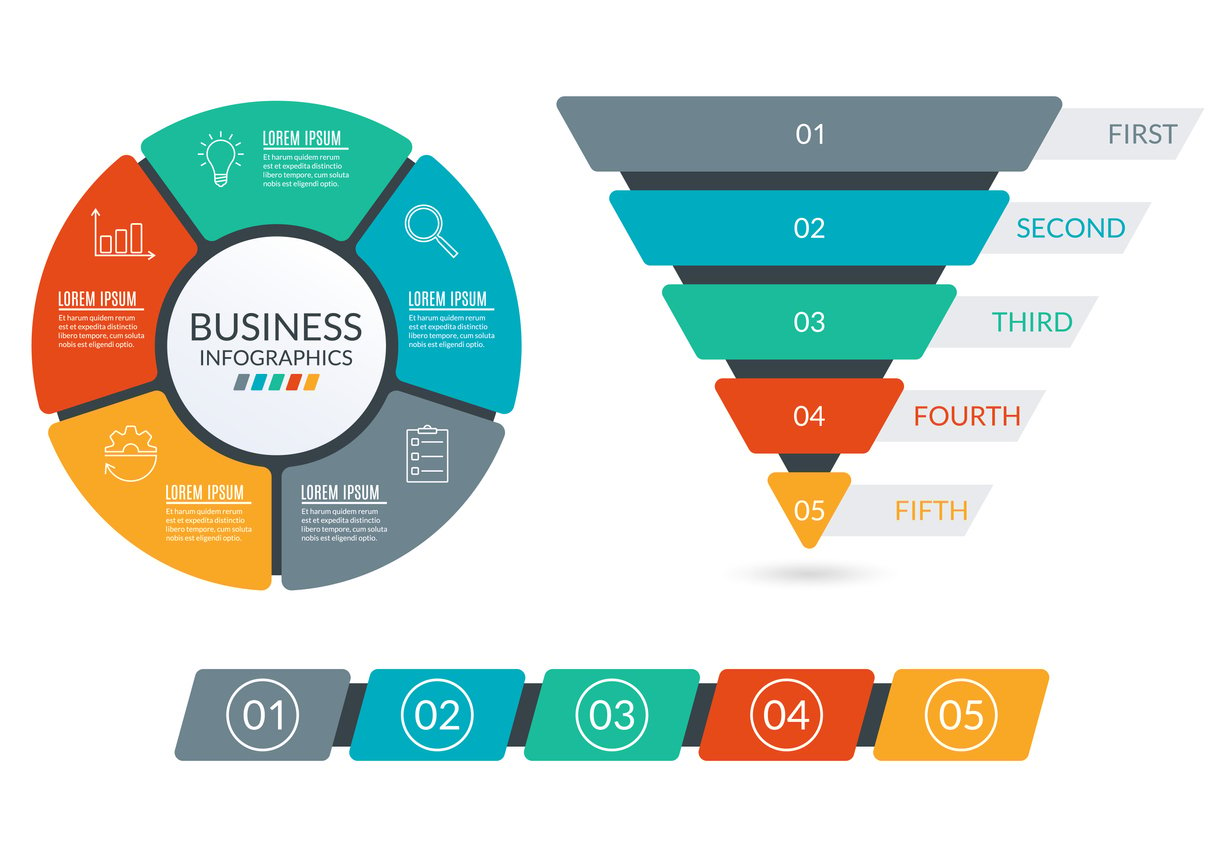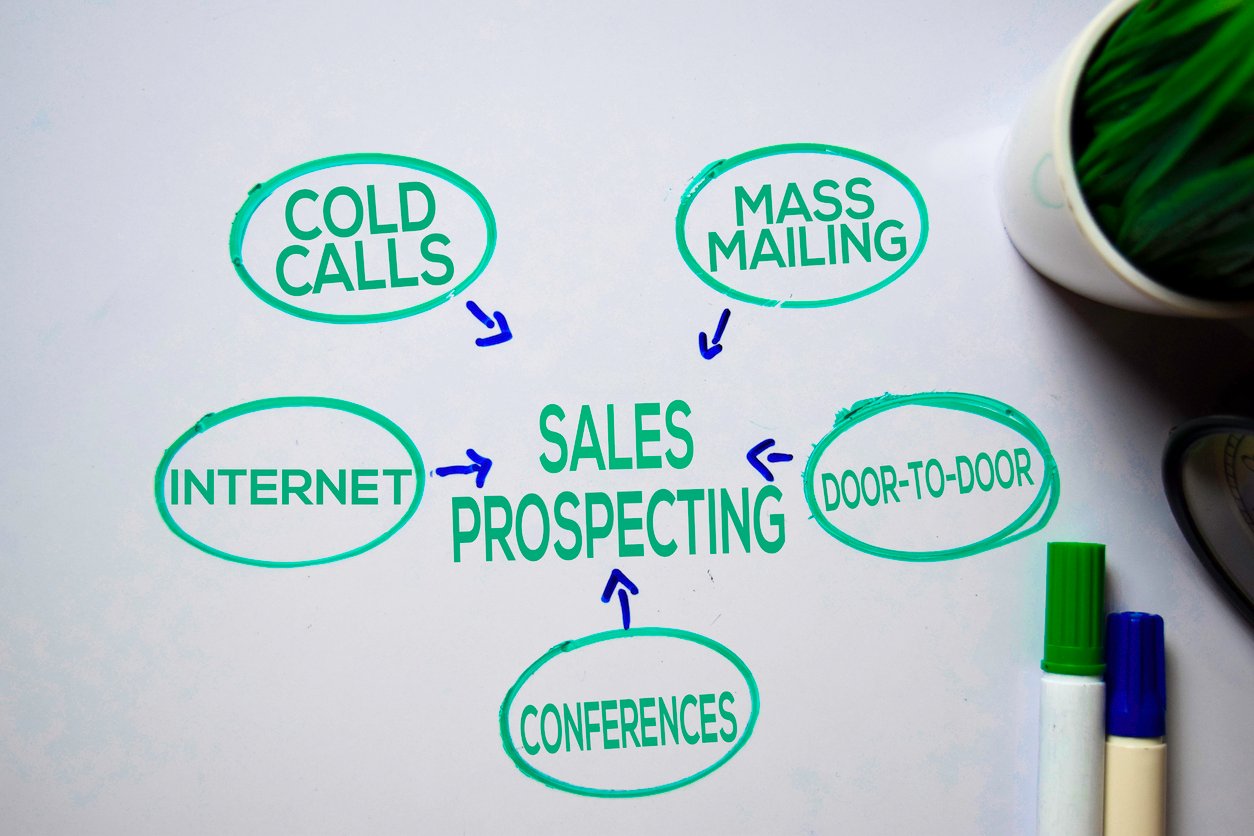
A Guide to Developing an Effective Lead Management Process
 Updated on
Updated on
 By Carlos Correa
By Carlos Correa
Carlos Correa
Carlos has been involved in the sales space for well over ten years. He began in the insurance space as an individual sales agent, managing teams as s...
learn more
Carlos Correa
Carlos has been involved in the sales space for well over ten years. He began in the insurance space as an individual sales agent, managing teams as s...
Table of Contents
Table of Contents
Managing leads can be a chaotic rodeo. You're wrangling emails, chasing phone calls, and desperately trying to rope in that elusive sale before it disappears into the digital dust.
That's where the lead management process comes in, like a trusty lasso for your marketing and sales team. It's the secret weapon that turns those tumbleweeds into loyal customers and boosts your revenue like nobody's business.
- What is the lead management process, anyway?
- What are the key stages involved?
- What are lead management best practices?
- How can I lasso in those leads and turn them into gold?
So, grab your Stetson, saddle up, and get ready to master the art of lead management. We're about to turn you into a lead-wrangling rockstar!
Let’s go!
What is Lead Management?
Lead management is the systematic process of attracting, qualifying, nurturing, and converting potential customers into paying customers. It's like a pipeline that funnels potential customers through the different stages of your sales funnel, from initial interest to purchase and beyond.
Effective lead management is important for several reasons:
- Increased Sales: When you manage your leads effectively, you're more likely to convert them into paying customers.
- Improved Customer Relationships: By nurturing your leads, you can build stronger relationships with them. This can lead to increased customer loyalty and lifetime value.
- Reduced Costs: Effective lead management focuses on investing in leads that are more likely to convert.
- Improved Efficiency: A well-organized lead management process saves you time and improves efficiency. This can free up your team to focus on other important tasks.
- Greater ROI: When you invest in effective lead management, you can expect a higher return on investment. This is because you're spending your marketing budget on leads that are more likely to convert.
Lead Management Best Practices
Okay, so we've established that lead management is the secret sauce to business success. But how do you actually wield this magic ladle and turn your lead management process into a symphony of conversions? Here, we’ll dish out some battle-tested best practices that'll have you conducting your leads like a maestro in no time.
Document Your Sales Process
We've all been there: a lead pops in, ready to buy, but you're staring at your screen like a confused hamster. What was the next step? What did you promise them in the last email? Did you even qualify them?!
That, my friend, is the nightmare of an undocumented sales process. It's like trying to cook a soufflé blindfolded – one wrong move, and everything falls flat.
Documenting your sales process is the roadmap that keeps everyone on the same page, from the marketing team luring in those lovely leads to the sales team smoothly closing deals.
So, how do you document the lead management process? Here are some golden nuggets to help you document your sales process like a pro:
- Map it out: Visualize your entire sales funnel, from lead generation to customer retention. Tools like flowcharts or mind maps can be your best friends here.
- Define stages and roles: Clearly outline each stage of the lead journey and assign ownership for each step. Who qualifies leads? Who nurtures them? Who closes the deal? Delegate like a boss.
- Include touchpoints: Detail all communication touchpoints, from emails and calls to social media interactions and even snail mail (if that's your jam).
- Feel free to iterate: Your sales process is a living document. As you learn and adapt, update it regularly to keep your lead conversion train chugging along.
Determine Lucrative Lead Generation Channels
The second lead management process best practice is identifying the right channels to attract those lucrative leads. Think of it like planting your seeds. You wouldn't throw a handful of random seeds on the pavement and expect roses, would you?
Nope, you gotta find fertile ground! That's where determining lucrative lead generation channels comes in.
Let's explore some prime seed-planting spots:
|
Channel |
Description |
Stats |
|
Organic Search (SEO) |
Be the answer they're googling! Optimize your website and content for relevant keywords to become the search engine's go-to guide. |
68% of online experiences begin with a search engine. Imagine the stampede to your virtual door! |
|
Content Marketing |
Become the guru they crave! Share valuable blog posts, infographics, and ebooks that educate and entertain your target audience. |
According to the Content Marketing Institute, 67% of marketers saw a rise in demand and leads as a direct result of their content marketing endeavors. |
|
Social Media |
Get the party started! Join the conversations where your ideal customers hang out, offering insights and building relationships. |
A significant majority, 68% of consumers, choose to follow brands on social media as a means of staying updated on the products and services they offer. |
|
Paid Advertising |
Give your organic reach a boost! Utilize platforms like Google Ads and Facebook Ads to target specific demographics and interests with laser precision. |
PPC ads boast a 5-10% conversion rate. Sometimes, a little paid promotion can be the magic bullet. |
The best channel for you depends on your target audience, budget, and overall marketing strategy. Don't just blindly follow the crowd. Experiment, analyze, and refine your approach to find the golden goose (or, should I say, golden lead?).
Ensure Lead Data is Correct
Let’s say you're chasing a hot lead, crafting the perfect email, and ready to close the deal. Then, bam! You realize their phone number has a typo, and their email address bounces back like a beach ball in a hurricane.
Yeah, bad data can kill your lead management mojo faster than you can say "unqualified lead." That's why data accuracy is the lead management gospel. Think of it like building a house – you need a solid foundation, and in this case, that's accurate data.
Here are some stats that'll make you data-obsessed:
- 34% of B2B marketers report inaccurate data as a major obstacle to marketing campaign success. Yikes! Don't be that statistic.
- 37% of marketing budgets are wasted due to poor data quality. Let's not flush your hard-earned cash down the drain.
So, how do we ensure data accuracy?
- Double, Double, Toil, and Trouble: Ditch the manual entry! Invest in forms that automatically validate email addresses and phone numbers.
- Required Fields? Nah, Let's Be Smart: Don't overwhelm your leads with a novel-length form. Ask for just the essentials (name, email, maybe their favorite pizza topping – gotta personalize!), and let them volunteer the rest later.
- Segmentation Savvy: Group your leads based on how they entered your funnel. Website sign-ups? Hit them with a targeted landing page. Downloaded your whitepaper? Boom, send them a relevant blog post. Segmentation keeps things tidy and relevant.
- Keep it Consistent: One lead, two addresses? Not cool. Standardize data formats across your entire system, from marketing automation to your CRM. This ensures everyone's singing from the same hymn sheet (and not off-key!).
Secure Lead Data in a CRM
Let's face it. Nobody wants their leads chillin' out in a dusty spreadsheet. It's like throwing diamonds in a hay bale – totally not maximizing their sparkly potential.
That's where a Customer Relationship Management system comes in. Think of it as your digital corral, a safe and organized haven for all your lead data. It's like a fancy hotel for your pygmy ponies, complete with individual stalls, spa treatments (aka email automation), and gourmet meals (aka targeted content).
Here's why a CRM is your lead-management BFF:
- Security: No more lead-napping! CRM systems keep your data secure with firewalls and encryption, so no rogue competitors can steal your precious ponies.
- Organization: Ditch the sticky notes and scattered files. A CRM keeps all your lead information centralized and easy to access, like a digital Rolodex on steroids.
- Automation: CRMs are like robot shepherds, automating tasks like lead scoring, email follow-ups, and birthday wishes (because who doesn't love a birthday email from their favorite brand?).
- Insights: CRMs are data gurus, offering insights into lead behavior and preferences.
Now, I know what you're thinking: "This all sounds great, but I'm not exactly a tech whiz." Fear not! There are CRMs out there for every level of technical expertise, from super simple to so powerful it can predict the stock market (okay, maybe not that powerful, but you get the idea).
And speaking of user-friendly, have you heard of Ringy? It's our very own CRM, designed with the busy entrepreneur in mind. It's like a CRM built by a pygmy pony whisperer – intuitive, efficient, and packed with features that'll make you want to high-five your computer screen.
Remember, a happy lead is a buying lead, and a secure CRM is the key to keeping them happy (and your pygmy ponies safe from harm).
How to Set Up an Effective Lead Management Process
Alright, lead wranglers, we've got the foundational knowledge and best practices in our tool belts. We've even secured our precious data in a fancy CRM corral. Now, let's get down to the nitty-gritty: building a lead management process that'll turn your scraggly herd into a stampede of paying customers.
Let's dive into the first step.
1. Attract and Capture Leads
Gone are the days of spammy pop-ups and bait-and-switch tactics. Today's leads are savvy, they're selective, and they expect to be wooed. You need to be the charming angler, not the dynamite-wielding barbarian.
Here's how to attract and capture those elusive leads like a pro:
- Content is king (and queen): Offer valuable, educational, or entertaining content that resonates with your target audience. Think blog posts, infographics, webinars, or even short, funny videos (cat memes are always a win).
- Landing pages that convert: Your landing page is the first impression, so make it count. Keep it clean, focused on one offer, and use persuasive language that entices visitors to hand over their email addresses. Think less "buy now" and more "get your free cheat sheet."
- Lead magnets that mesmerize: What's your irresistible offer? Ebooks, white papers, free consultations, or discounts are all great options. Just make sure it's something your target audience would flip for.
- Forms that don't scare: Ditch the lengthy forms with 20 fields. Keep it short and sweet, asking only for the essential info. Less is more, especially when it comes to form friction.
2. Assign a Score to Each Lead
So, we've lured them in with our irresistible bait bowls, and now our corral is full of curious pygmy ponies. But not all ponies are created equal, right? Some are laser-focused on your offerings, ready to gallop towards that "buy now" button. Others are just casually browsing, maybe looking for a quick snack and then moseying on.
That's where lead scoring comes in. Think of it like this: Every lead gets points based on their behavior and how well they align with your ideal customer profile. Downloaded a white paper? Bam, 5 points! Attended a webinar? Another 10! Shared your content on social media? Jackpot, 20 points!
But assigning points isn't just a guessing game. Consider factors like:
- Company size and industry: Are they in your target market?
- Job title and decision-making power: Can they actually pull the trigger on a purchase?
- Website and email activity: Are they actively engaging with your brand?
- Downloaded content and attended events: What topics are they interested in?
- Lead source: Did they come from a high-converting referral program or a cold email blast?
Remember, it's all about predicting purchase potential. The higher the score, the hotter the lead, and the sooner they need to be moved to the nurturing stage.
3. Segment Your Leads
We've attracted leads and scored them based on their purchase potential, but now what? Do we just throw them all in the same hay bale and hope for the best? Absolutely not! It's time for lead segmentation, the art of dividing your prospects into specific habitats based on their unique needs and preferences.
Here's how to segment your lead herd:
|
Factors |
Description |
|
Demographics |
Group leads by age, location, income, or industry. This helps you craft relevant content and offers that resonate with their specific needs and challenges. |
|
Behavior |
Segment based on website activity, email engagement, or downloaded content. Did they devour your blog post on marketing automation? Send them a targeted nurturing sequence about your marketing tools! |
|
Lead Score |
Naturally, group your high-scoring hotshots separately from the casual browsers. Prioritize the high scorers with personalized outreach and sales handoffs, while the browsers get a gentler nurturing approach. |
|
Pain Points & Goals |
What keeps your leads up at night? Understanding their specific challenges allows you to offer solutions that directly address their needs, making them more receptive to your brand. |
Segmentation isn't just about dividing and conquering. It's about creating hyper-personalized experiences that nurture leads at their own pace and through their preferred channels.
4. Take Advantage of Your CRM’s Lead Automation Tools
Now, it's time to nurture your leads, turn that eagerness into brand loyalty, and ultimately, watch them gallop towards that sweet conversion finish line. But let's face it, nurturing all those leads individually is like trying to herd cats… on roller skates. That's where your CRM's lead automation tools become your superhero, your tireless ranch hand who keeps the lead-nurturing rodeo running smoothly.
Think of it this way: You've got personalized email sequences that automatically send relevant content based on each lead's interests and behavior. Downloaded a white paper on marketing automation? Boom, they get an email series packed with tips and tricks. Attended a webinar on social media strategy? They're on a fast track to valuable industry reports and case studies.
But automation isn't just about email. Your CRM can also assign leads to sales reps based on scoring, expertise, and workload. No more manual matching games just qualified leads seamlessly delivered to the right salesperson, ready to close the deal.
And the best part? You can automate lead movement through your sales pipeline based on specific triggers. Downloaded a pricing guide? They're automatically moved to the "proposal" stage. Requested a demo? Boom, they're on the fast track to a personalized sales call.
Automation isn't about replacing the human touch. It's about freeing up your time for the strategic stuff, the personalized conversations that truly win over customers. Think of it as your tireless assistant, handling the repetitive tasks while you focus on building relationships and closing deals.
5. Nurture Your Leads
Nurturing ain't just tossing out a few bales and hoping for the best. It's about understanding your leads’ individual needs, preferences, and pain points. It's speaking their language, offering solutions, and building genuine relationships. Remember, pygmy ponies, I mean, leads, can smell BS a mile away. Be genuine, be helpful, and be the best hay provider they've ever met.
Here's how to create a nurturing haven:
- Segment your herd: Not all ponies are the same. Group your leads based on interests, behavior, and scoring. This way, you can tailor your communication and avoid sending irrelevant hay to disinterested grazers.
- Content that keeps them coming back: Ditch the generic brochures and say hello to personalized emails, targeted blog posts, and industry insights that address their specific challenges. Think bite-sized knowledge nuggets, engaging videos, and interactive tools that keep them whinnying for more.
- Drip, drip, delicious drip: Automate your nurturing with Ringy's Drip Marketing. Schedule a series of emails that gradually introduce your brand, educate them on your solutions, and subtly nudge them towards that "buy now" oasis. It's like setting up a hay delivery service straight to their inbox, ensuring they never get hungry for valuable content.
- Go beyond email: Remember, there's a whole world beyond the inbox. Engage them on social media, invite them to exclusive webinars, or even host live Q&A sessions. The more touchpoints, the stronger the connection, and the more likely they'll see you as their trusted guide on the path to purchase.
Nurturing is a marathon, not a sprint. It's about building trust, demonstrating expertise, and becoming an indispensable resource in their lives.
6. Create a Follow-Up Strategy
Moving along nicely!
Now, it's time to seal the deal with a follow-up frenzy that'll turn those nurtured leads into loyal champions.
Your leads are delicate orchids, and you're the expert gardener. You've given them the perfect soil (valuable content), the right amount of sunlight (nurturing emails), and even a trellis to climb (your sales team's expertise). But without consistent follow-up, those orchids might just wilt away, forgotten in the back corner of your digital greenhouse.
So, what can you do to prevent this from happening? Simple!
First, don't send the same generic emails to everyone. Group your leads based on interests, pain points, and buying stages. Map out automated email sequences that deliver targeted content based on lead behavior. Think educational guides for newbies, case studies for mid-stage prospects, and exclusive offers for purchase-ready champions.
Here’s more: don't be a one-trick pony (pun intended). Mix up emails with personalized calls, social media mentions, or even handwritten notes for high-value leads. Remember, variety is the spice of the follow-up life.
Lastly, show your leads you're not just a faceless corporation. Respond to their inquiries promptly, address their concerns with empathy, and even celebrate their small wins. This personal touch is like sunshine for your orchids, fostering trust and loyalty.
Follow-up isn't about nagging; it's about staying connected, providing value, and gently nudging your leads toward the purchase decision.
7. Analyze and Improve Your Lead Management Process with Analytics
The final step is to analyze and improve our entire lead management process, transforming it from a dusty corral into a conversion goldmine. Remember all that data we've been collecting? We gotta analyze it, understand it, and use it to optimize every step of the way.
Here's how we mine for lead-management gold:
- Track the entire journey: Monitor lead behavior from the initial bait-bowl nibble to the triumphant purchase. See where they drop off, what content resonates, and which nurturing tactics convert best.
- Measure conversion rates: This is your ultimate yardstick. Track conversions at each stage, identify bottlenecks and experiment with different strategies to see what makes those numbers climb.
- Analyze lead scoring accuracy: Are your high-scoring leads actually converting? If not, refine your scoring criteria to ensure you're focusing on the ponies most likely to cross the finish line.
- Uncover hidden patterns: Use data visualization tools to see trends you might miss. Maybe Tuesdays are your lead-magnet bonanza, or perhaps blog posts with images convert 20% better. These insights can be game-changers.
- A/B test everything: Don't just guess what works – test different landing pages, nurture sequences, and even subject lines. Data-driven decisions lead to conversion evolution, not just random hay bale shuffling.
Analyzing your lead management process isn't a one-time rodeo. It's an ongoing dance, a constant feedback loop that refines your approach and maximizes your results.
Conclusion
Whew! We've covered a lot of ground, from luring in curious pygmy ponies with irresistible bait to analyzing our lead-management process like data detectives. You’re now a lead-wrangling rockstar!
But let's be honest: wrangling all these leads can be tiring. That's where Ringy, your friendly CRM sidekick, steps in. We're not just fancy sales software. We're an automated rodeo with lead scoring, nurturing tools, and built-in analytics to help you make sense of it all.
So, ditch the spreadsheets and dusty notebooks. Let Ringy be your data whisperer, your conversion cheerleader, and your partner in the lead management workflow. We'll help you turn that chaotic corral into a smooth-running conveyor belt of loyal customers, ready to stampede your business to success.
Ready to manage leads with confidence? Request a demo today and let the lead-management magic begin!

Skyrocket your sales with the CRM that does it all.
Calling? Check. SMS? Check. Automation and AI? Check. Effortlessly keep in touch with your customers and boost your revenue without limits.

Take your sales to new heights with Ringy.
Sales in a slump? Ringy gives you the tools and flexibility you need to capture leads, engage with them, and turn them into customers.
Subscribe to Our Blog
Enter your email to get the latest updates sent straight to your inbox!
Categories
Related Articles




































































































